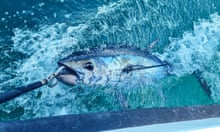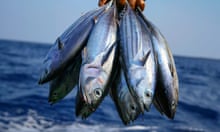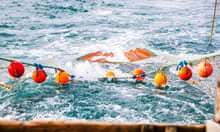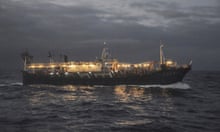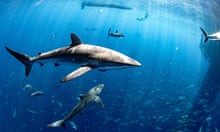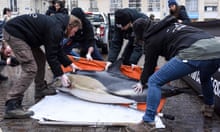The UK’s largest sandbank has been protected from bottom trawling, an environmentally destructive fishing technique.
Activists have been calling on the government for years to stop bottom trawling at Dogger Bank, an important site off the east coast of England for species including sand eels, hermit crabs, flatfish and starfish.
Recent data showed the fishing method, involving weighted nets being dragged across the seabed, had tripled in occurrence in the marine protected area (MPA) since Brexit.
This is despite the area being labelled an MPA. Bottom trawling happens in many of these environmentally significant areas, leading campaigners and experts to refer to them as nothing but “paper parks”. Not only does it disturb species living on the seabed, it is also a significant source of carbon release, as the seabed normally acts as a valuable sink to absorb greenhouse gases from the atmosphere, but turns into a carbon source when disturbed.
Now, the method will be banned, with government sources referring to the new legislation as a result of “Brexit freedoms”. The four bylaws, being introduced using new powers under the 2020 Fisheries Act, will come into effect in June.
The environment secretary, George Eustice, said: “Outside the EU, we are using our new freedoms to protect our marine environment. We will be stopping trawling and dredging in these marine protected areas to protect wildlife and habitats, through powers we have in our Fisheries Act 2020.”
As well as Dogger Bank, there are three other MPAs being saved from bottom trawling. These are Inner Dowsing, Race Bank and North Ridge special area of conservation, , which lies off the south Lincolnshire coast, the South Dorset marine conservation zone and the Canyons marine conservation zone, which is in the far south-west corner of the UK’s continental shelf area.
However, experts have pointed out there are 64 MPAs, most of which have few protections from destructive fishing.
Melissa Moore, the head of UK policy at the NGO Oceana, said: “It’s good news that government has at last taken the first step to manage four of its 64 offshore benthic MPAs, given that damaging activity such as bottom trawling is prohibited in MPAs under conservation law.
“We fully support the Dogger Bank bylaw that will protect the whole site and have benefits for the North Sea ecosystem beyond. However, the bylaw proposed for Inner Dowsing MPA is tiny and will only protect parts of the site. We call on UK to remedy this and with devolved governments to act quickly to ban bottom-towed gear in the remaining 60 offshore MPAs that they promised to manage following Oceana’s legal challenge in 2021. This is now increasingly urgent due to the climate and ecological crises.”
Greenpeace has been campaigning for the government to stop trawling at Dogger Bank, most notably dropping rocks in the MPA to thwart trawlers. Campaigners have asked the government to use its post-Brexit powers to go further and ban destructive fishing practices in all MPAs.
Fiona Nicholls, an oceans campaigner at Greenpeace UK, said: “It’s been 18 months since Greenpeace built a protective boulder barrier in the Dogger Bank and since the government committed to stop bottom trawling in this iconic and ecologically important area. While this is a major step towards protecting some of the most environmentally significant features of the Dogger Bank, destructive industrial fishing vessels like factory trawlers will still be allowed to plunder this now partially protected area.
“We need the government to get us on track this year to fully or highly protecting all of our marine protected areas. That means, as a starting point, banning all destructive industrial fishing vessels. This could be done using post-Brexit powers to restrict fishing licences, rather than simply relying on the cumbersome process of introducing partial site bylaw restrictions. Only then will the UK be a true world leader in marine protection, and can nature and coastal communities have a chance to recover.”


